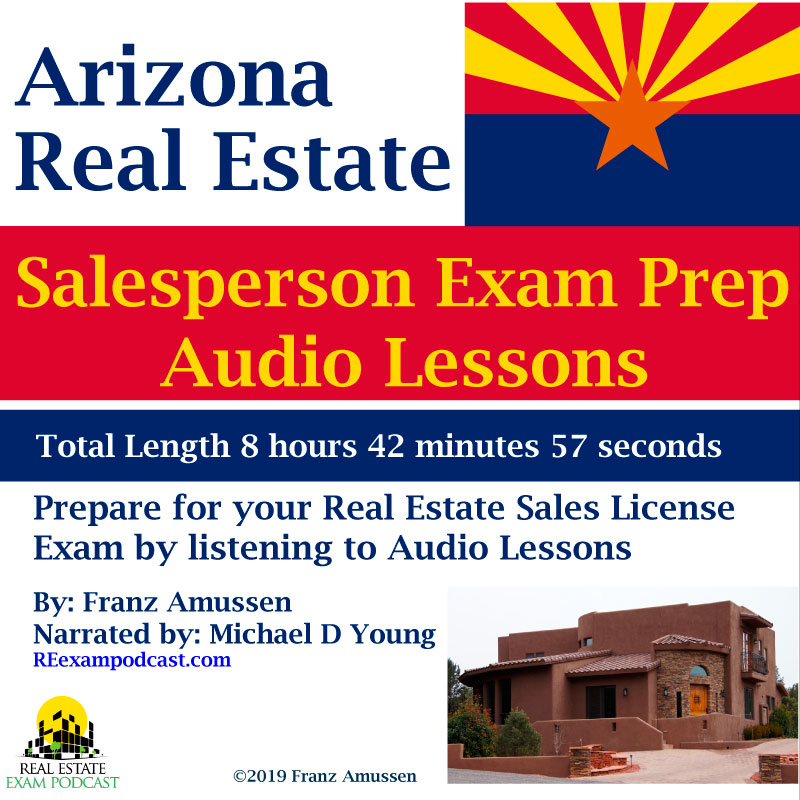Podcast: Play in new window | Download (Duration: 26:21 — 12.2MB)
Subscribe: Apple Podcasts | Email | RSS | More
Here is the 2021 Arizona Real Estate Salesperson Exam Lesson 4: Property Descriptions
2021 Arizona Real Estate Salesperson Exam Lesson 4: Property Descriptions
Here is a free lesson for the 2021 Arizona Real Estate Salesperson Exam Lesson 4: Property Descriptions. The full series of lessons is available at the Website
Property Descriptions
Common Ways of Describing Property
• Addresses (123 Main Street)
• Names (Grand Central Station)
Legal descriptions are needed for legal documents. An address is not enough by itself. Addresses can be inexact and subject to change. Legal descriptions accurately identify and locate a parcel within the boundaries of a state.
Reasons for Legal Description
• Public recording
• Creating a deed for conveyance or lease
• Completing mortgage documents
• Executing and recording other legal documents
• Methods of Description
• Metes and Bounds method: Uses landmarks, directions and angles to define the boundaries of an area. Starts at the POB = the point of beginning. It has to return to the POB in order to be valid.
• Metes = distance and direction, Bounds = fixed reference points, natural monuments and landmarks. These can be natural or artificial, such as rocks, plants, rivers, lakes, or artificial survey stakes.
• It begins with identifying the city, county and state, and then it gives the POB and describes the distance and direction to the first monument and then the next and the next until you return to the POB.
• Rectangular Survey System: A traditional method that uses natural materials. Uses a grid system.
• Works best for square or rectangular parcels of land. Land can be described in fractions of sections (halves, thirds, eights, quarters)
• If land is in a different irregular shape, you have to couple this with another method of legal description.
• Meridians = north/south lines
• The principal meridian is the starting point.
• The north/south area between meridians is called a range. (6 miles wide)
• Parallels = east/west lines
• The base parallel is the starting point.
• The east-west area between two parallels is known as a tier or township strip. (6 miles wide)
• Township = 6 miles by 6 miles
• Section = 1 square mile in a township, equal to 640 acres
Lot and Block/Recorded Platt: Using a map with subdivisions where each plot is numbered.
• Can describe residential, commercial, and industrial subdivisions.
• Surveyors survey blocks and create a map. They designate the size and location of each lot and block. This is presented to local authorities, who must approve or reject it. It is then recorded by the county recorder and can be used for reference.
Datums are used to describe elevation in property.
• These are needed when talking about air and subsurface rights or property with multiple floors.
• The starting point is sea level at New York Harbor.
• To make things easier, some surveyors use local benchmarks instead.


